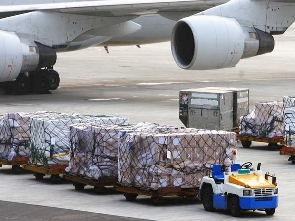 Global export orders fell to a historically low level
Global export orders fell to a historically low level
The International Air Transport Association (IATA) released February 2020 data for global air freight markets showing that demand, measured in cargo tonne kilometers (CTKs*), decreased by 1.4% compared to the same period in 2019.
Adjusting the comparison for the impact of the Lunar New Year, which fell in February in 2019, and the leap year in 2020, which meant an additional day of activity, seasonally-adjusted demand was down 9.1% month-on-month in February.
By February, the negative impacts of the COVID-19 crisis on air cargo demand were becoming visible. The month witnessed several significant developments
Manufacturing production in China, one of the world’s largest air cargo markets, dropped sharply due to widespread factory closures and travel restrictions.
Global export orders fell to a historically low level. The global Purchasing Managers Index (PMI) is in contraction territory, with all major trading nations reporting falling orders.
Significant cargo capacity was lost as a result of airlines reducing passenger operations in response to government travel restrictions due to COVID-19, severely impacting global supply chains.
Cargo capacity, measured in available cargo tonne kilometers (ACTKs), dropped by 4.4% year-on-year in February 2020. This is subject to the same distortions as the non-seasonally adjusted demand numbers.
“The spread of COVID-19 intensified over the month of February, and with it, the impact on air cargo. Adjusted demand for air cargo fell by 9.1%. Asia-Pacific carriers were the most affected with a seasonally-adjusted drop of 15.5%. What has unfolded since is a story of two halves.
The disruption of global supply chains led to a fall in demand. But the dramatic disruption in passenger traffic resulted in even deeper cuts to cargo capacity. And the industry is struggling to serve remaining demand with the limited capacity available. We only got a first glimpse of this in February. Among all the uncertainty in this crisis, one thing is clear—air cargo is vital.
It is delivering lifesaving drugs and medical equipment. And it is supporting global supply chains. That’s why it is critical for governments to remove any blockers as the industry does all it can to keep the global air cargo network functioning in the crisis and ready for the recovery,” said Alexandre de Juniac, IATA’s Director General and CEO.
Regional Performance
Airlines in Europe suffered a sizeable decline in year-on-year growth in total air cargo volumes in February 2020, while North American and Asia-Pacific carriers experienced more moderate falls. Middle East, Latin America and Africa were the only regions to record growth in air freight demand compared to February 2019.
African carriers posted the fastest growth of any region for the 12th consecutive month in February 2020, with an increase in demand of 6.2% compared to the same period a year earlier. Capacity grew 3.0% year-on-year. The Africa-Asia and Africa-Middle East trade lanes continue to bring robust growth to the region.
Asia-Pacific airlines saw demand for air cargo contract by 2.2% in February 2020, compared to the year-earlier period. Seasonally-adjusted cargo demand fell by 15.5% compared to January 2020, to levels last seen in early 2014. The drop in demand was largely due to the impact of COVID-19. Capacity decreased 17.7% – the largest fall since early 2013. Cargo capacity in China dropped sharply in February, driven in large part by the collapse of belly-hold capacity.
North American airlines saw demand decrease by 1.8% in February 2020, compared to the same period a year earlier. Capacity increased by 4.1%. Cargo traffic on the Asia-North America trade lanes decreased by 2.4% year-on-year as a result of factory closures in Asia due to COVID-19.
European airlines posted a 4.1% decrease in cargo demand in February 2020 compared to the same period a year earlier. European carriers were among the first to cancel flights to and from Asia, contributing to the drop in demand in February. The Within Europe market decreased by 7.8% year-on-year. This suggests that the region was affected by global supply chain disruptions and early COVID-19 containment measures – notably in Northern Italy, an important manufacturing region. Capacity decreased by 3.8% year-on-year.
Middle Eastern airlines’ cargo demand increased 4.3% in February 2020 compared to the year-ago period. Capacity increased by 6.0%. However, given the Middle East’s position connecting trade between China and the rest of the world, the region’s carriers have significant exposure to the impact of COVID-19 in the period ahead.
Latin American airlines experienced an increase in freight demand in February 2020 of 1.8%. Capacity decreased by 2.6% year-on-year. The region was relatively unaffected by the COVID?19 outbreak in February. However, disrupted global supply chains and a fragile economic backdrop in some countries in the region continue to create headwinds for air cargo.